LEGAL SPEND COMPLIANCE PART 2
Understanding your legal spend data is a concept the legal industry has just begun to embrace. The previous post in this 2-part primer on legal spend compliance discussed billing hygiene and what constitutes good billing hygiene. This post will discuss Workflow Efficiency and Staffing.
Workflow Efficiency means tasks are done in a manner that doesn’t add unnecessary steps and time. Legal Decoder’s technology analyzes line items and uses benchmarks to determine if Workflow Efficiency can improve.
Office Communication
A Workflow Efficiency issue we often see is excessive Office Communication from timekeepers. This can include phone calls, teleconferences, meetings, and conversations. The main reason why excessive communication is a problem is that the true costs and time to complete a task are inflated making it difficult to assess the actual value of the work.
Here are some examples of excess Office Communication:
(For Matter XYZ)
“04/17/2016 – Update retention applications for counsel, administrative agent, and operational advisor re updated case information (0.7); review all current conflicts spreadsheets and related schedules in connection with counsel retention application (2.2)”; confer with M. Ellis re logistics(.1); revise motion (0.5)”
“04/19/2016 – Update motions for interim compensation and ordinary course professionals (0.8); and confer with M. Ellis re same (0.2).”
The narrative part in question is “confer with M. Ellis.” If the timekeeper truly does require constant communication, why does the client have to take on the burden of those costs? Without seeing the entire body of narratives, it seems innocuous but it can be a signal to the client AND law firm that work is not done efficiently or a timekeeper requires constant guidance to complete a task.
Chipping
Chipping means adding excessive, small increments of time to a task. This can occur with senior and junior timekeepers. An example of Chipping:
“8/31/2016 – Attention to RN plan settlement. (0.1)”
“9/1/2016 – Attention to RN plan settlement issues. (0.1)”
“9/2/2016 – Attention to RN plan settlement issues. (0.1)”
It’s clear the timekeeper is just adding small increments of time to bill out. The narrative doesn’t mention what actual work has been done, either. We’ve seen cases of Chipping where phone calls were charged .1 hours across several matters once a week. In cases like that there needs to be discussions between the client and law firm.
STAFFING
Finding the right mix of staff can complete tasks and move matters forward. The incorrect mix of people can result on work being dragged out, high costs, or both.
First Year
Line items are flagged with First Year flags when recent law graduates work on tasks at a less efficient level compared to more senior lawyers.
“Update and circulate updated draft of equity trading order (0.8).”
“Update Notice of Commencement per T. Young’s comments (0.5); review petition information (0.3)”
Both examples above are easy to gloss over but upon closer look it probably doesn’t take nearly an hour to update and send out a draft trading order. Someone more senior may be able to do the work more efficiently over the course of a matter but the cost may be higher. Being able to surface these insights from data can help you determine which option is appropriate.
Skills Mismatch – Overqualified
When timekeepers work on tasks below their skill level their line items are flagged with Skills Mismatch – Overqualified. The line item below was billed from a law partner:
“Review/revise discovery letter (1.0); confer with client re presentation and other miscellaneous issues (0.5)”
Revising a letter and providing comments to a draft might be better assigned to a junior timekeeper with a lower cost. When senior-level lawyers are doing work well below their level it inflates the total legal costs and may keep the senior-level lawyers away from tasks requiring strategic direction or subject matter expertise.
Workflow Efficiency and Staffing are two drivers of cost in legal spend. Both can seem subjective and difficult to quantify. Legal Decoder’s technology uses benchmarks to determine whether work is done efficiently with the right people. Corporate law departments and firms can use the data analysis to ensure billing guidelines are met and timekeepers are compliant which can help maintain the relationship with the client.
